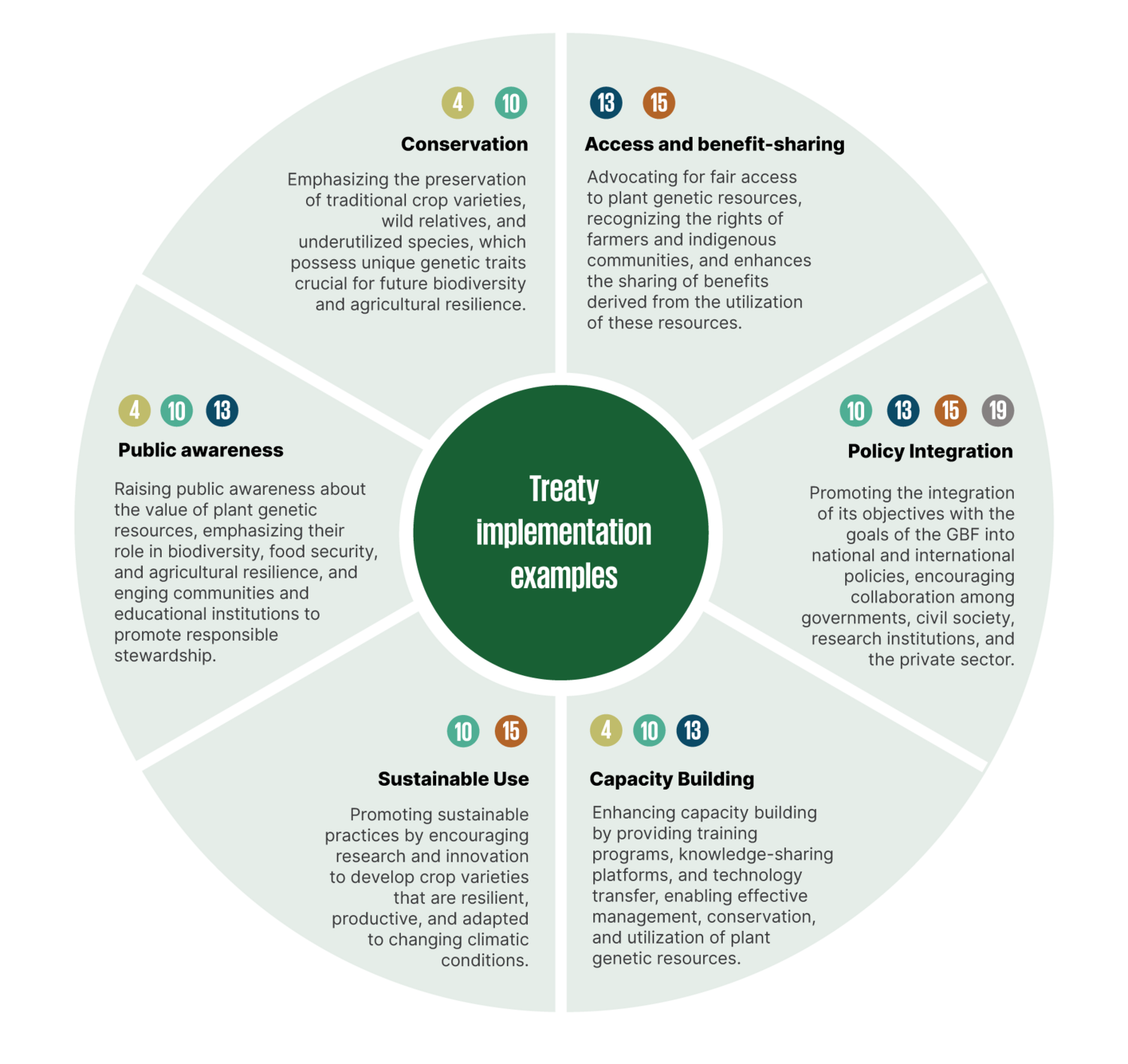Plant Genetic Resources for Food and Agriculture
Implementing the Global Biodiversity Framework
Plant genetic resources for food and agriculture (PGRFA) constitute an integral component of agricultural biodiversity. PGRFA are crucial for sustainable agricultural production, adaptation to climate change, economic development and improving smallholder farmers’ livelihoods.
The International Treaty on Plant Genetic Resources for Food and Agriculture (International Treaty) is a pivotal global agreement dedicated to conserving and sustainably using PGRFA. It empowers farmers and scientists by facilitating access to a diverse range of plant materials crucial for developing new crop varieties. The International Treaty also ensures fair sharing of benefits from the use of these resources, acknowledging the vital contributions of farmers and indigenous communities to global food security and agricultural biodiversity.
While the International Treaty establishes the global policy framework for PGRFA conservation, access, and benefit-sharing, the provides essential financial and operational support to maintain genebanks worldwide. The International Treaty provides a unique multilateral policy framework and platform to enable genebanks to flourish, connect and support each other. This collaboration ensures that plant genetic diversity is preserved and accessible, enhancing both food security and agricultural resilience.
In December 2022, the was adopted at the 15th Conference of Parties (COP15) of the United Nations Convention on Biological Diversity (CBD). This framework sets ambitious goals for 2050 and targets for 2030 to halt and reverse biodiversity loss.
The connection between biodiversity and food security is well reflected in the KM-GBF, which includes goals and targets directly related to the agricultural sector and to genetic resources, including genetic resources for food and agriculture.
Collaboration and implementation
The KM-GBF calls for enhanced cooperation among conventions to implement and monitor progress. Aligning the implementation of the KM-GBF and the International Treaty and ensuring effective coordination between the respective National Focal Points is crucial for success.
Sharing experience and knowledge, and coordinating efforts between relevant national stakeholders across different sectors will also be essential.
National Biodiversity Strategies and Action Plans
NBSAPs are instruments for implementing the CBD and the KM-GBF. As countries revise their NBSAPs, there is an opportunity to highlight the importance of PGRFA, including the role of genebanks and PGRFA in situ/on-farm conservation. The content of NBSAPs will shape national and international funding priorities.
Integrating the conservation and sustainable use of PGRFA in NBSAPs will contribute to addressing climate change, biodiversity loss, sustainable development, food and nutrition security, and ultimately to achieving the goals and targets of the KM-GBF.
Key KM-GBF Targets where PGRFA can make an impact
How national implementation of the International Treaty contributes to achieving KM-GBF Targets




